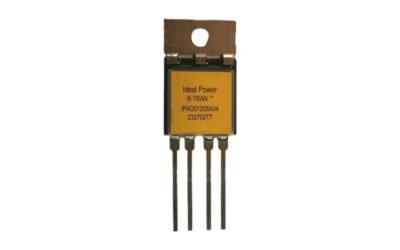It can be challenging to grasp just how rapidly our electric vehicle market has evolved. Back near the end of 2021, COVID-related panic was subsiding and the vibe around new EV startups was still very much optimistic. Almost every other week, a new brand was vying to be the next Tesla, as if that company’s sky-high stock price could be anyone’s for the taking.
VinFast, like other small car brands with larger-than-life plans, wanted a piece of that pie and quickly pivoted its plan from gas-powered BMW-based sedans and SUVs to self-developed EVs meant to take the world by storm.
In 2022, I flew to Vietnam to see what they were up to, and well, the rest was history. The cars were bad. The brand was weird, and that’s putting my experience very lightly. Most importantly, I didn’t see a way forward for VinFast to gain any sort of success in markets outside of Vietnam, given what I had learned from the brand on such an over-the-top program for an absolutely terrible car.
Still, my less-than-glowing, borderline Kafkaesque experience in Vietnam didn’t stop the brand from pressing through and unleashing its electric crossovers onto the American public. Reviews, initially cautiously optimistic (even if some of those opinions may have been completely at the behest of payola from VinFast for some influencer and influencer adjacent personalities), the sentiments quickly soured to bad when the cars finally reached American soil.
That hasn’t stopped folks from buying them. I mean, to be fair, not many VF8 and VF9 cars have reached American homes—but more did than you’d think. While on vacation and visiting family in North Carolina, I saw at least a couple of VF8 models with private plates not far from its theoretical future U.S. factory in Cary.
Near the end of my stay, I had a bit of time to kill before my return flight home. So, I figured I’d pop into a VinFast dealer while I was in North Carolina. I wanted to know: Why are people buying these? Was I wrong, back in 2022? Hell, could it be a good daily driver for me? Inquiring minds (me) needed to know. So I went and spent some time with a VF8.
VinFast has been plenty controversial in North Carolina. Like many other brands that plan to invest in the United States, VinFast came here as a way to circumvent tariffs on foreign-made electric cars, at least when the government was still incentivizing new EV construction. The plant itself has stalled, now delayed to 2028, partially because sales are low and VinFast itself is hemorrhaging money. Arguably, the whole brand still only exists because of the hubris of Pham Nhat Vuong, the founder of VinFast’s parent company, who views the car company as a key part of Vietnam’s national identity.
Whatever the case, with about three hours before I needed to board a plane, I rolled up to this VinFast dealer and walked in. Outside sat about a dozen examples of the VF8, and a couple of VF9 seven-seat units. By and large, both looked the same as what I drove in Vietnam three years ago; the longer VF9 is actually quite sharp in person.

Photo by: Kevin Williams/InsideEVs
The VF8 looks like a leftover Renault design from the 2010s. With a QR25DE 2.5-liter engine and a CVT transmission from the generic Nissan-Renault parts bin under that hood, it would feel right at home on some French car lot between a Koleos SUV and a worn-out Clio hatchback.
Acid-tinged non sequitur aside, the VF8’s undergone a transformation, at least on paper, to make it more competitive. Prices have been cut, and the range has gone way up. The first year’s $50,000 price tag and sub-200-mile range have turned into a price of under $40,000 and 256 miles of range.
On paper, the VF8’s specs best the Volkswagen ID.4, offering more range and power for a cheaper price than 2024’s roughly 200-mile range ID.4. (The smaller battery ID.4 has yet to return for the 2025 model year, but when it returns later, it will likely keep a similar price to last model year.) Also, the extra seven inches of length gives the perception of a bigger car, which means something to some American buyers who want to feel like they’re getting the most car they can for the money.

Photo by: Kevin Williams/InsideEVs
Once again, I came in with an open mind. VinFast said it had done some tweaking of the VF8 since it was introduced to the U.S., and since I drove those pre-production prototypes in Vietnam. A bit of sweet-talking to some of the nicest car salesmen I’ve ever met, and we were on the road.
And well, it’s just as bad as I remembered. If not worse, since now it’s on real roads in curvy and hilly North Carolina, rather than glass-smooth resort roads on a private island in Vietnam. In 2022, I wrote this:
“Even on the island resort’s glass-smooth roads, the VF8 bucked and bounced as if the car was on cut springs. The steering was dead and nonlinear, paired with tires that gave up grip at the slightest bit of cornering verve, though I’m not sure how much of a dynamic impression one can get on a closed course on a private resort island.”
Three years later, and the VF8 is still dynamically terrible. I have been told that there’s been some suspension tuning work done to make it not entirely hopeless, but I don’t feel it. The car still feels constantly overwhelmed on American roads.
The busy and bouncy ride and nonlinear steering feel at odds with each other; the car feels like it’s having a hard time going in a straight line at freeway speeds, even. None of the interior feels nice to the touch, and the infotainment screen is both slow to react and it’s burdened by a text-heavy layout with bad hierarchy that isn’t easy to decipher on the move.
The car feels so glaringly bad in the context of so many new EVs I’ve driven around the globe; it’s as if someone electrified an old 2005 Buick Rendezvous with a bad aftermarket BOSS head unit and called it a day. It’s been a very long time since I’ve driven a car that was this insecure behind the wheel.

Photo by: Kevin Williams/InsideEVs
“Why the hell would anyone buy this?” I thought to myself.
I could feel the tension in the car. The very nice salesman knew this wasn’t a good car, but he wasn’t playing to lose. We drove back to the showroom and had a seat at his desk.
“So, what have you heard about VinFast? What brought you in?” he said. I explained that I was in the market for a new EV, and I saw that VinFast was offering a pretty competitive lease deal.
“Oh, was it $279 with nothing down? I can do you one better,” he explained, pulling out a copy of an already-made deal sheet for the VF8. He explained that his particular store was running essentially a sign and drive event, all tax, title, and registration fees would be included for $311 per month for a VF8 Eco, with no money down.
If I wanted the fully loaded Plus model that I drove, it would only run me $363 per month, out the door, with no money down. Keep in mind, this is before any sort of negotiating. If I wanted a VF8 that day, then I could have had one. I believe the dealership would have made that happen.

Photo by: Kevin Williams/InsideEVs
And with that, I understood why someone would take a chance on VinFast. This was one of the best deals in EV leasing that I’ve ever seen. Also, it appears that it wasn’t contingent on the federal tax credit, so VinFast is still advertising this deal (and ones like it) at dealers across the country. For $311 a month, the only thing you’d be getting is something like a subcompact Nissan Versa or Chevy Trax.
Sure, there are plenty of stories online of some writers and buyers leasing cars like the Fiat 500e or Nissan Leaf for effectively free; those stories often omit details like tax or state-level incentives that take care of a down payment. States like Colorado and Illinois have a particularly generous incentive, whereas North Carolina and my state of Ohio have never had any. For example, I’ve seen a $129 per month lease deal on a Chevy Equinox EV in Ohio, but this number didn’t include taxes or the sometimes more than $5,000 down payment. When all is said and done, that won’t really be even close to $129 per month, would it?
By contrast, VinFast’s advertised numbers look to get really close to what it’s advertising. Which, for some buyers, is a big deal. It sucks to go to a dealership with one price and idea in your head based on advertising materials, only to walk out frustrated and disappointed because that would have never been feasible.
I left the showroom with the salesman’s card and drove back to the airport to drop off my rental car and catch my flight home. On the way to the rental car counter, I couldn’t help but wonder, “What if VinFast was good, actually?”

Photo by: Kevin Williams/InsideEVs
The process felt smooth and friendly, and the price was right, even if the car was terrible. What if I could get this price on a car worth a damn?
I think price is the biggest roadblock to widespread EV adoption, and it’s all less about range or charging infrastructure. I think that’s why VinFast is still kicking. The price is right for VinFast’s cars, but the cars themselves are wrong. Maybe the brand will learn and figure out how to release a good car.
Or, someone else could figure out how to match such a good deal with a good car.
Contact the author: kevin.williams@insideevs.com






0 Comments